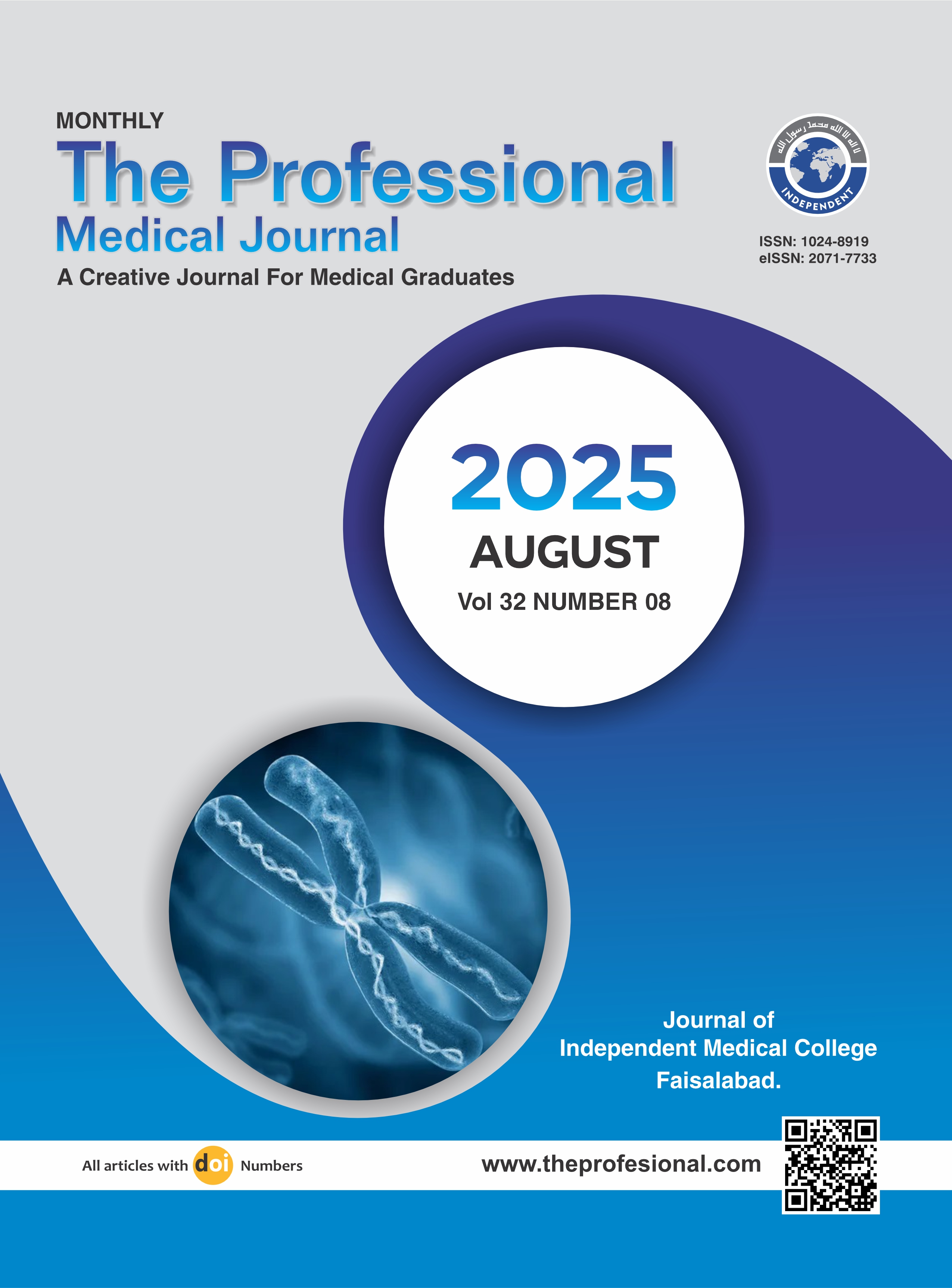Incidence of knee pain after intra-medullary nail for close tibia fracture.
DOI:
https://doi.org/10.29309/TPMJ/2025.32.08.9579Keywords:
Closed Tibia Fractures, Functional Outcomes, Intramedullary Locking Nail (ILN), Knee Pain, Knee Injury and Osteoarthritis Outcome Score (KOOS), Visual Analog Scale (VAS)Abstract
Objective: To determine the incidence of knee pain following intramedullary locking nail (ILN) insertion for closed tibia shaft fractures. Study Design: Descriptive study. Setting: Department of Orthopedics, Hayatabad Medical Complex, Peshawar. Period: 24th September 2024 to 24th February 2025. Methods: A sample size of 151 participants was calculated using the WHO sample size calculator with a 95% confidence level and a 5% margin of error. Non-probability consecutive sampling was used to recruit patients aged 18-65 years undergoing ILN for closed tibia fractures (AO type A and B). Data were collected using the Visual Analog Scale (VAS) for pain intensity and the Knee Injury and Osteoarthritis Outcome Score (KOOS) for functional outcomes after follow up of 45 days post ILN. Statistical analysis was performed using IBM SPSS version 23. Results: The mean age of participants was 34.47 ± 16.32 years, with 76.8% being male. Functional outcomes were good in 69.5% of participants, fair in 21.9%, and poor in 8.6%. Pain assessment revealed 37.7% with no pain, 34.4% with mild pain, 19.2% with moderate pain, and 8.6% with severe pain. Significant associations were found between functional outcomes and gender, age, education, diabetes, and fracture type (p < 0.001). Males, younger patients (18-40 years), those with higher education, non-diabetic patients, and those with Type A fractures had better outcomes. Pain levels were similarly influenced by these factors. Conclusion: Functional outcomes were predominantly good (69.5%) with significant pain-free status (37.7%) in patients undergoing ILN for closed tibia fractures. Younger age, male gender, higher education, absence of diabetes, and Type 1 fractures were significant predictors of superior functional outcomes and reduced pain scores.
Downloads
Published
Issue
Section
License
Copyright (c) 2025 The Professional Medical Journal

This work is licensed under a Creative Commons Attribution-NonCommercial 4.0 International License.


